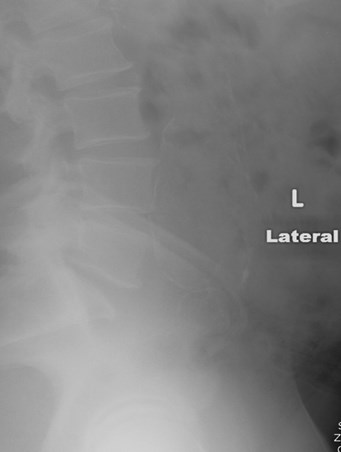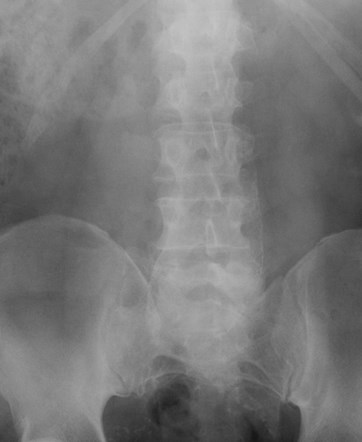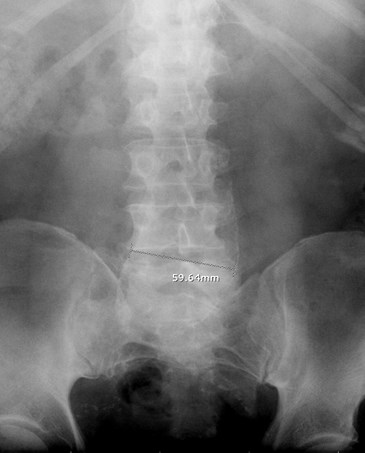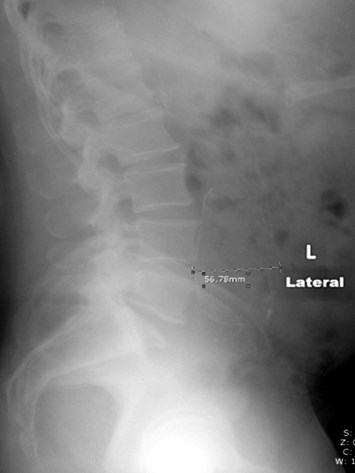
Abdominal Radiography

Susan L. Summerton, M.D.

Abdominal Radiography:Current indications
1. History of kidney stones, evaluatechange in position
2. Foreign bodies
3. Bowel perforation
4. Acute bowel obstruction







ABC’S of abdominal radiographs….
Air, Bones, Calculi, Soft Tissues….

Obstruction Series
•Supine - no substitute
•Looking for
•Gas pattern
•Calcifications
•Soft tissue masses
•Prone or lateral rectum
•Erect or left decubitus
•Chest - erect or supine


Prone abdomen
•Looking for
•Gas in rectum/sigmoid
•Gas in ascending anddescending colon
•Substitute – lateral rectum
•Should always
see gas in
rectum



Erect Chest X-ray
•Looking for
•Pneumoperitoneum-most sensitive (1-2cc)
•Pneumonia at bases
•Pleural effusions
•Substitute – supinechest

* Pearl: A lateral erect cxr has been
found to be even more sensitive for
diagnosis of pneumoperitoneum
than an erect chest x-ray.




Erect abdomen
•Looking for
•Pneumoperitoneum
•Air-fluid levels





Left lateral decubitus:(Substitute for erect abd)
2nd best view looking for
pneumoperitoneum
(Can detect 5 cc free air)
FREE AIR

Normal Gas Pattern
•Stomach
•Always has air
•Small Bowel
•2-3 loops
•Normal diameter = 2.5 cm
•Large Bowel
•In rectum or sigmoid– almost always


Normal fluid levels on erect ordecubitus views
•Stomach
•Always
•Small Bowel
•2 or 3 levels possible
•Should be short
(< 2.5 cm long)
•Large Bowel
•None normally




COLON: Peripheral SMALL BOWEL: Central



Haustra: extend 1/3 across Valvulae: extend across
COLON Folds SMALL BOWEL Folds

Stool may be present

Abnormal Gas Patterns
•Localized ileus
•Several persistently dilated loops large or small bowel
•Sentinel loops
•Gas in rectum/sigmoid
•Generalized ileus
•Mechanical SmallBowel Obstruction(SBO)
•Mechanical LargeBowel Obstruction(LBO)

Supine

Prone





Prone



25 yo with lower abdominal pain






PancreatitisUlcer
Diverticulitis
Cholecystitis
Appendicitis
UlcerUreteral calculus
Sentinel Loops

•Gas in dilated SB &colon to rectum
•Long air-fluid levels
•Bowel soundsabsent or hypoactive
•Post-op patients
Generalized IleusKey Features



Mechanical SBOKey Features
•Dilated small bowel
•Fighting loops
•Air/fluid levels atdifferent heights
•Little gas in colon,especially rectum
•Key:disproportionatedilatation of SB



Case #1. 50 yo male presents with abdominal pain. Hisobstruction series shows a SBO. Which of the followingcauses of a SBO could be definitively made on hisobstruction series?(select all that apply)
Audience Question
a.Gallstone ileus
b.Small bowel volvulus
c.Internal hernia
d.Adhesions
e.External hernia

Mechanical SBOCauses
•Adhesions
•Volvulus
•Intussusception
•External Hernia*
•Gallstone ileus*
*Cause may be visible on plain film




Air in gallbladder
Ectopic gallstone
Gallstone Ileus
Rigler’s triad:
SBO
Ectopic gallstone
Air in biliary system
SBO





Mechanical LBOKey Features
•Dilated colon to point of obstruction
•Little or no air in rectum/sigmoid
•Little or no gas in small bowel, if…
•Ileocecal valve remains competent




Mechanical LBOCauses
•Tumor
•Volvulus
•Sigmoid, cecal
•Hernia
•Diverticulitis
•Intussusception


Summary of features of LBO vs SBO
SBO LBO
Bowel diameter SB > 3 cm LB > 5 cm
Position of loops Central PeripheralNumber of loops Many Few
Fluid levels Many, short Few, longBowel markings Valvulae HaustraLarge bowel gas No Yes

Colonic volvulus
•Sigmoid Volvulus, Cecal Volvulus
•Both involve a twisting of the mesentery resulting in LBO




Sigmoid Volvulus
•Coffee bean sign
•Proximal colon alsodilated (LBO)
•Older patients
•Acquired laxity ofsigmoid mesocolon
•Prone to recur





supine
Typical history: patient in 40’s or 50’s withabdominal pain, nausea and vomiting
CECAL VOLVULUS: Single dilated loop of colon




50 yo with abdominaldistention. This film showswhich 1 of the following?
Audience Question
a.Pneumatosis
b.Rigler’s sign
c.Portal venous gas
d.Ascites
e.Ventral hernia

Extraluminal AirExtraluminal Air
•Pneumoperitoneum
•Ruptured hollow viscus
•Perforated ulcer
•Perforated diverticulitis
•Perforated carcinoma
•Trauma
•Instrumentation
•Abscess
•Intramural Air


Most common signs of pneumoperitoneum
•Air below diaphragm
•Rigler’s sign: air on both sides of bowel wall visible
•Aka Bas Relief Sign



Rigler’s sign
Normal comparison

Both sides of bowel wall visible


Less common signs ofpneumoperitoneum
•Falciform ligamentsign
•Lucent liver sign/liver edge sign
•Football sign
•Air outlining peritonealcavity



Falciform ligament sign
Supine viewLarge amount of air




LIVEREDGE SIGN
LUCENTLIVER
SIGN







Potential Pitfalls forpneumoperitoneum
•Atelectasis
•Chilaiditi’s Sign: Interposition of airfilled loops of bowel above liver


Chilaiditi's sign


2 patients: One has subsegmental atelectasis.Which 1 has pneumoperitoneum?












Pneumoretroperitoneum

Abscesses
•Small bubbles of air (< caliber of normal bowel)
•Triangular collections of air
•Unusually large collections of air


*
*






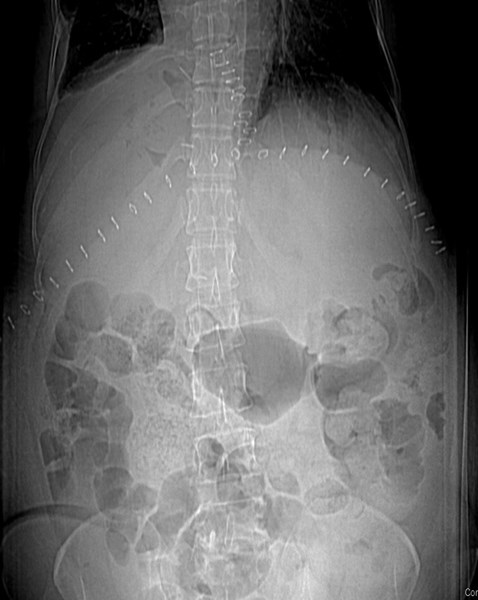

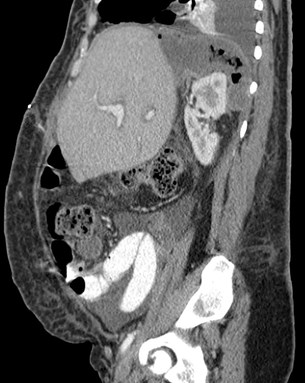

Intramural Air
•Causes:
•Infection
•Ischemia
•Ulcer
•Penetrating injury
•Iatrogenic (endoscopy)
•Linear or cystic
•GI tract, Gallbladder, Bladder

RUQ pain

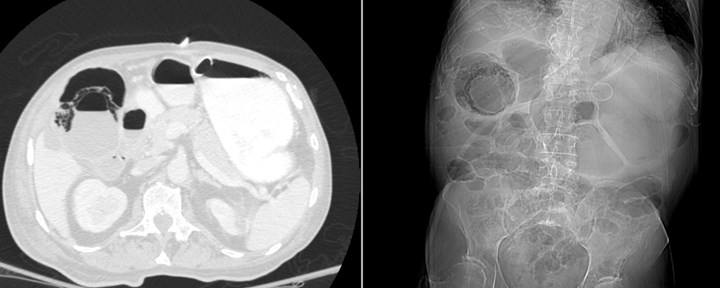



25 yo schizophrenic female withabdominal distention

Emphysematous cystitis





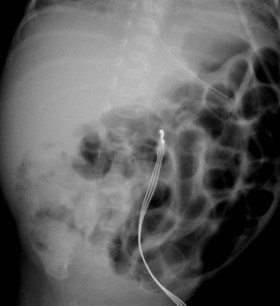



Necrotizing Enterocolitis

Soft Tissue Masses
•Hepatosplenomegaly
•Mass (tumor, abscess, cyst)
•Focal region of increased density
•Bowel displacement
•Asymmetry of bowel gas pattern
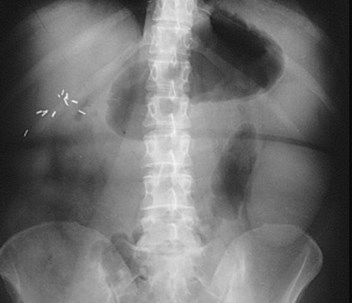

Myomatousuterus
splenomegaly

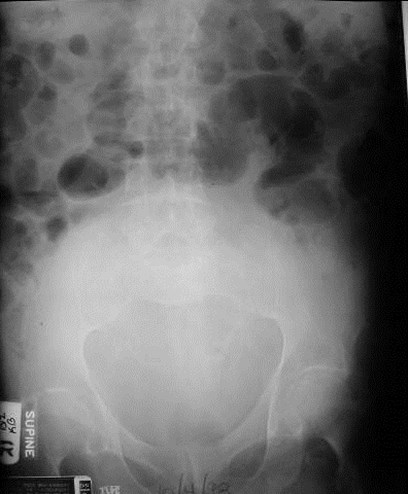

Distended bladder, decompressed after catheterization
Several hours later


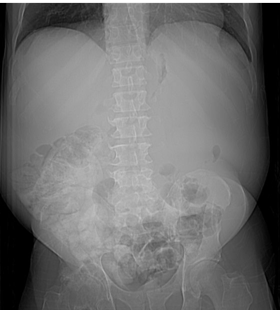

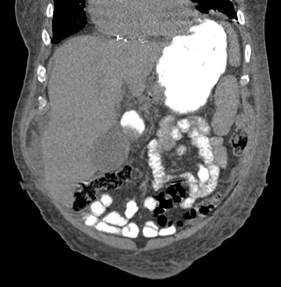





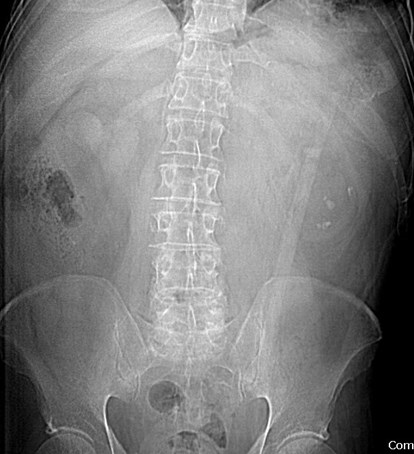
55 yo with left flank pain:This supine view showssigns of…
Audience Question
a.Obstructing left renalcalculus
b.Osteomyelitis of lumbarspine
c.Emphysematous cystitis
d.Ruptured aortic aneurysm



RTKIDNEY

LT
KIDNEY
PsoasMuscle

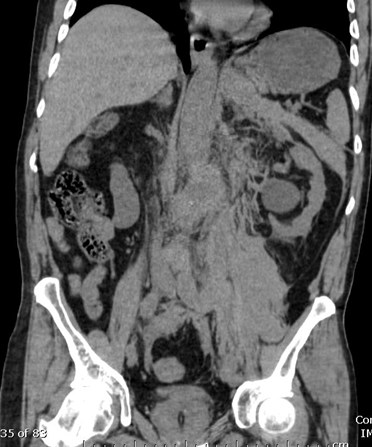

55 yo with left flank pain
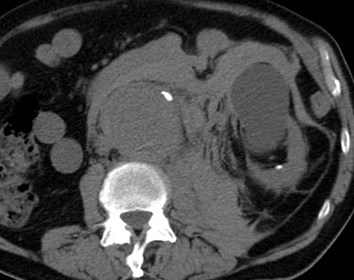

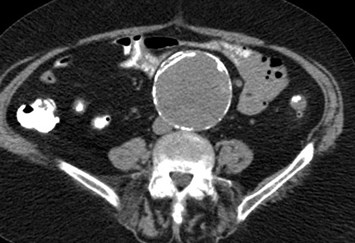
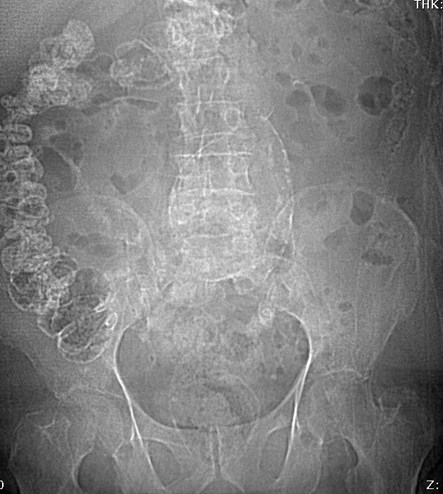
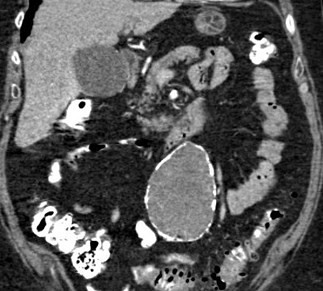
50 yo with abdominal pain

